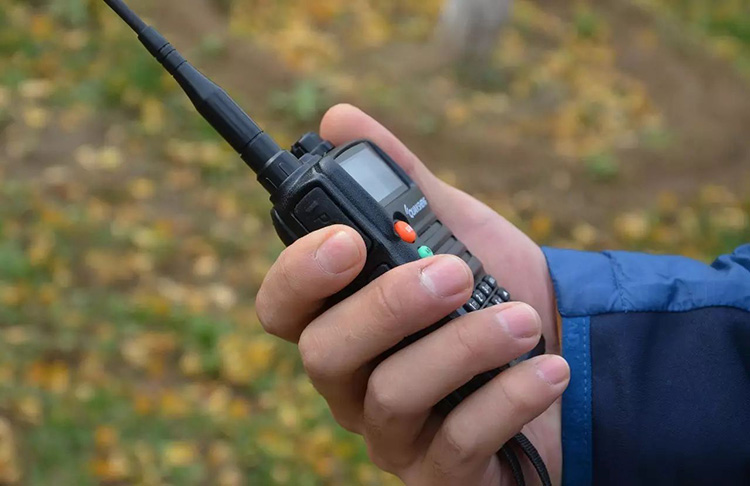As a wireless communication tool, two-way radios (walkie-talkies) offer unique advantages when compared to mobile phones. They excel in one-to-one and one-to-many directed specialized communication, with the distinct advantage of establishing communication quickly. This is especially true for one-to-many communication, a capability that regular mobile phones cannot easily replicate. Now, let's briefly explain the principle of walkie-talkies and how to use them.

A walkie-talkie is a two-way mobile communication tool that allows communication without the need for any network support, incurring no call charges. It is suitable for relatively fixed and frequent communication scenarios. Walkie-talkies are currently divided into three main categories: analog walkie-talkies, digital walkie-talkies, and IP walkie-talkies.
Frequency Restrictions for Walkie-Talkies
To ensure that the majority of users can communicate without interference and to reasonably utilize frequency resources, the National Radio Management Committee has divided the use of frequencies and stipulated that different industries should use corresponding frequency ranges. When purchasing a walkie-talkie, users should apply for frequencies from the local radio management committee.
The radio frequency technical specifications for public walkie-talkies must adhere to the following requirements:
1. Operating Frequencies (in MHz): 409.7500, 409.7625, 409.7750, 409.7875, 409.8000, 409.8125, 409.8250, 409.8375, 409.8500, 409.8625, 409.8750, 409.8875, 409.9125, 409.9250, 409.9375, 409.9500, 409.9625, 409.9750, 409.9875.
2. Modulation Type: F3E.
3. Effective Isotropic Radiated Power (EIRP): < 0.5W.
4. Frequency Tolerance: <+5ppm.
5. Transmitter Spurious Emissions: <50uW.
6. Receiver Spurious Emissions: <20nW.
7. Channel Spacing: 12.50 kHz.
The working principle of a wireless two-way radio is as follows:
1. Transmission Section:
A phase-locked loop (PLL) and a voltage-controlled oscillator (VCO) generate the RF carrier signal for transmission. After buffering and amplification, it passes through the driver amplifier and power amplifier to produce the specified RF power. It then goes through an antenna low-pass filter to suppress harmonic components and is transmitted through the antenna.
2. Reception Section:
The reception section combines the amplified RF signal with the first local oscillator signal from the phase-locked loop frequency synthesizer circuit at the first mixer to generate the first intermediate frequency (IF) signal. The first IF signal is further filtered using a crystal filter to eliminate adjacent channel interference. The filtered first IF signal enters the IF processing chip, where it is mixed again with the second local oscillator signal to generate the second IF signal. After passing through a ceramic filter to remove unwanted spurious signals, the second IF signal is amplified and demodulated to produce an audio signal. The audio signal is then amplified, passed through a bandpass filter, undergoes de-emphasis, and enters volume control circuitry and a power amplifier, driving the speaker to deliver the required information.
3. Modulation Signal and Modulation Circuit:
Human speech is converted into an audio electrical signal by a microphone.
4. Signaling Processing:
The CPU generates CTCSS/CDCSS signals, which are then amplified and adjusted before entering the voltage-controlled oscillator for modulation. The low-frequency signal obtained after demodulation is partially filtered and shaped by an audio bandpass filter and enters the CPU, where it is compared to a preset value. The result controls the output of the audio power amplifier and speaker. In other words, if it matches the preset value, the speaker is turned on; if it doesn't match, the speaker is turned off.
The usage instructions for a walkie-talkie are as follows:
1. There are three main knobs/buttons used on the walkie-talkie: the power switch, the volume control, and the PTT (Push-to-Talk) button. The top-left knob functions as both the power switch and volume control, while the top-right knob is used to adjust the channel. The side button is the PTT button for initiating communication.
2. To power on the walkie-talkie, rotate the power switch knob clockwise until you hear a distinct startup sound. The indicator light will blink green, and then you can adjust the volume to a suitable level.
3. Set the walkie-talkies to the same channel. If you encounter frequent interference or noise, it may be due to overlapping channels with others. In such cases, switch to a different channel to avoid interference.
4. When receiving communication from others, the indicator light will flash green.
5. When you need to transmit, press and hold the PTT button and start speaking. Release the PTT button promptly after completing your message.
6. If using a desktop charger for charging, a red solid indicator light indicates that charging is in progress. When the indicator light turns green, it signifies that the charging process is complete.

